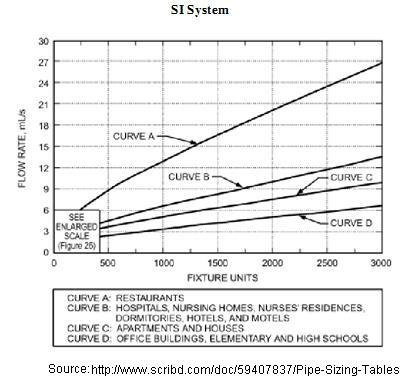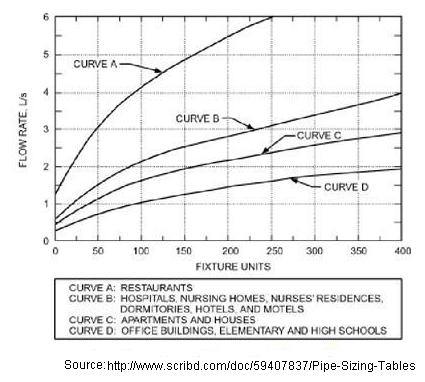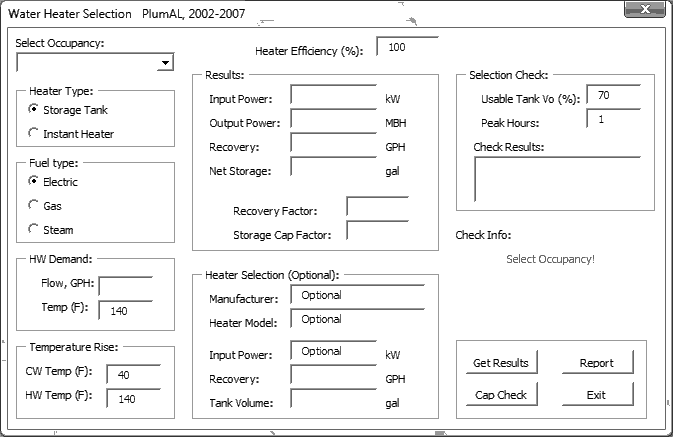
Water Supply
Sizing Semi-Instantaneous Water Heaters
Step 1 - Determine the total fixture unit load
Determine the total fixture unit load for all the fixtures serviced by your water heater application using the Fixture Units Table. The following table shows an example for a college dormitory.
| No. of Fixtures | Type of Fix. | Fix. Unit | Demand Fix. Unit |
|---|---|---|---|
| 150 | Private Lavatory | .75 | 113 |
| 120 | Private Shower | 1.5 | 180 |
| 20 | Slop Basin | 2.5 | 50 |
| 8 | Clothes Washer | 2.0 | 16 |
| Total Fixture Units: | 359 | ||
Step 2 - The Revised Hunter Curves
The original Hunter Curves were revised by ASHRAE (Figures 1 and 2) by grouping buildings based on their usage with type A, B, C and D. It is widely used in selecting semi-instantaneous water heaters.
 |
 |
Enlarged |
Step 3 - Select the proper water heater/water temperature controller
Refer to the modified Hunter Curves in Figure 1 and Figure 2. Curve B represents dormitories. Enter the graph from the bottom at 359 fixture units and go up to curve B. Then move to the left horizontally to read approximately 3.8 L/s of hot water capacity required.
Note: Remember to add any constant flow capacities, as determined under "Important Note" below, to this 3.8 L/s gpm.
Important Note
Special consideration should be given to applications involving periodic use of gang showers, process equipment, laundry machine etc., as may occur in field houses, gymnasiums, factories, hospitals, etc. Because these applications could have all equipment on at the same time, their total hot water capacity should be determined and then added to the maximum hot water demand as read from the modified Hunter Curves. Use the following formula to determine total hot water capacity needed for these applications when final water temperatures are lower than that of the water heater.
B = Blended water temperature out of the fixture
H = Hot water temperature to the fixture
C = Cold water temperature to the fixture
Source: Armstrong International
Use Hot Water Mixing calculator to calculate the percentage of hot water for preparing the needed flow with blended water temperature.
On Screen Calculator by EngineerMate
This calculator is for multiple uses:
- Different Type of Water Heaters: Volumetric or Semi-Instantaneous
- Different fuel: Electric, Natural Gas or Steam
The calculator image is self-explanatory on its functions.
 |
Manufacturers